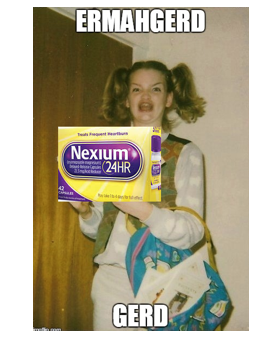Article
8 Tips to Treat Acid Reflux and GERD
Author(s):
If patients come to the pharmacy with ailments like heartburn, stomach pain, and difficulty swallowing, they may have acid reflux or gastroesophageal reflux disease.
If patients come to the pharmacy with ailments like heartburn, stomach pain, and difficulty swallowing, they may have acid reflux or gastroesophageal reflux disease (GERD).
Heartburn, which affects around 10 million US adults, is the most common symptom of GERD and may be felt in the stomach or throat. It may also be accompanied by an acidic taste in the mouth.
Pharmacists can counsel patients looking for OTC recommendations, advise patients to use a diary to keep track of reflux triggers, and inform pregnant women that symptoms will likely disappear after they give birth.
Pharmacists can also serve as watchdogs for inappropriate proton pump inhibitor (PPI) use.
In a recent study, pharmacists found 383 drug-related problems among 145 patients taking PPIs. The most common issues were drug interactions, untreated indications, overdosages, and drugs used without a valid indication.
The Centers for Gastroenterology provides a useful overview of symptoms, treatment options, and definitions of acid reflux and GERD.
Here are some of the center’s tips that pharmacists can share with patients who are not as excited about GERD as this girl:

1. Patients with mild GERD symptoms may want to try antacids, H2 antagonists, or dietary changes.
Antacids will provide only temporary relief because stomach acid is neutralized briefly after taking a dose. On the other hand, H2 antagonists usually taken once or twice a day reduce production of acid, but they may not be as effective as PPIs.
Dietary changes may include avoidance of food like caffeine, alcohol, peppermint, and fatty foods. Weight loss may also reduce symptoms.
2. For patients who experience acid reflux symptoms during the night, raising the head of the bed 6 to 8 inches may help.
Elevating the patient’s head and shoulders discourages acid from traveling upward.
Blocks of wood or a foam pad may be used to lift the head of the bed. Using extra pillows in bed is not a good alternative, since they can create an unnatural shape for the body and increase pressure on the stomach.
3. Smoking cessation may ease GERD symptoms.
Smoking reduces saliva, which is used to help neutralize acid. Smoking can also cause coughing, which leads to more episodes of acid reflux.
4. Gum or lozenges can stimulate saliva production.
Studies have shown that chewing gum can reduce levels of acid in the esophagus.
5. Eating smaller meals and avoiding food before bed are 2 good counseling points for GERD patients.
Patients should try to eat at least 3 hours before bedtime. In addition, eating smaller meals means that patients will avoid having their stomach become overdistended.
6. Tight-fitting clothing can cause problems.
Tight clothing increases pressure on the abdomen and may force stomach contents into the esophagus.
Many news outlets have been calling attention to the current “waist training” craze. Celebrities like Kim Kardashian and Jessica Alba have praised the tight corsets that are purported to create curves, but many experts say waist trainers can lead to acid reflux.
7. For patients still struggling with severe GERD symptoms, PPIs like esomeprazole, omeprazole, lansoprazole, dexlansoprazole, pantoprazole, and rabeprazole may help.
Pharmacists can inform patients that they can expect to be on PPI treatment for about 8 weeks, at which point the dose may increase or be discontinued.
Long-term treatment may be needed if symptoms present again within 3 months.
“The goal of treatment for GERD is to take the lowest possible dose of medication that controls symptoms and prevents complications,” the Centers for Gastroenterology stated.
8. If GERD symptoms persist with even 1 PPI, there are other available steps.
An alternative PPI may be used, or the dose of a PPI may be increased. Patients may be instructed to take a PPI twice a day instead of once a day.
Testing may be done to see if there are other factors causing symptoms. Patients may consider surgical treatments like laparoscopic Nissen fundoplication.






